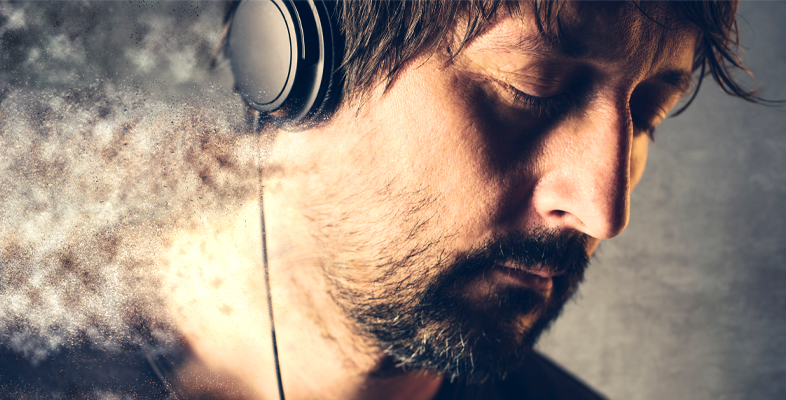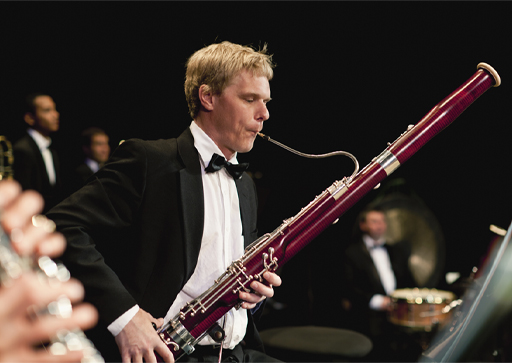1.1 Texture
The way different lines of melody and harmony in music are woven together is referred to as the texture. We might think of the texture as like the vertical and horizontal threads of a woven cloth which may be dense or transparent and work in relation to each other. Music in which a variety of pitches within a narrow range is heard might be described as having a dense texture. Conversely a spread of pitches over a wide range might contribute to a light or transparent texture.
Activity 1
Listen to the two audio extracts which both feature the bassoon and decide whether the texture could be described as dense, or transparent. Consider which musical elements informed your decision.
Focus your listening on the parts of the audio where the bassoon is prominent as this presents the most significant contrast of texture. If you are not familiar with the sound of the bassoon, remember that the Philharmonia Instruments website [Tip: hold Ctrl and click a link to open it in a new tab. (Hide tip)] is available to listen to the sound of a wide range of orchestral instruments.
Discussion
Audio 18 had a transparent texture. The musical elements which contributed to this included the wide range of pitches sounded across the various instruments, which included the use of the high register in the bassoon contrasting with the low register of the bass clarinet. This resulted in a sparseness which enabled the listener to hear through the different layers of sound.
Audio 19 in contrast has a dense texture, created by a limited range of pitches sounded by the woodwind instruments (bassoons, clarinets and cor anglais), each playing in a low register. The string section of the orchestra accompanied, exploiting the lower registers of each instrument and playing pizzicato (plucking the strings), which served to reinforce the sound quality of the staccato (detached) bassoons. This tightly packed texture made it more difficult to hear the different layers of sound.

